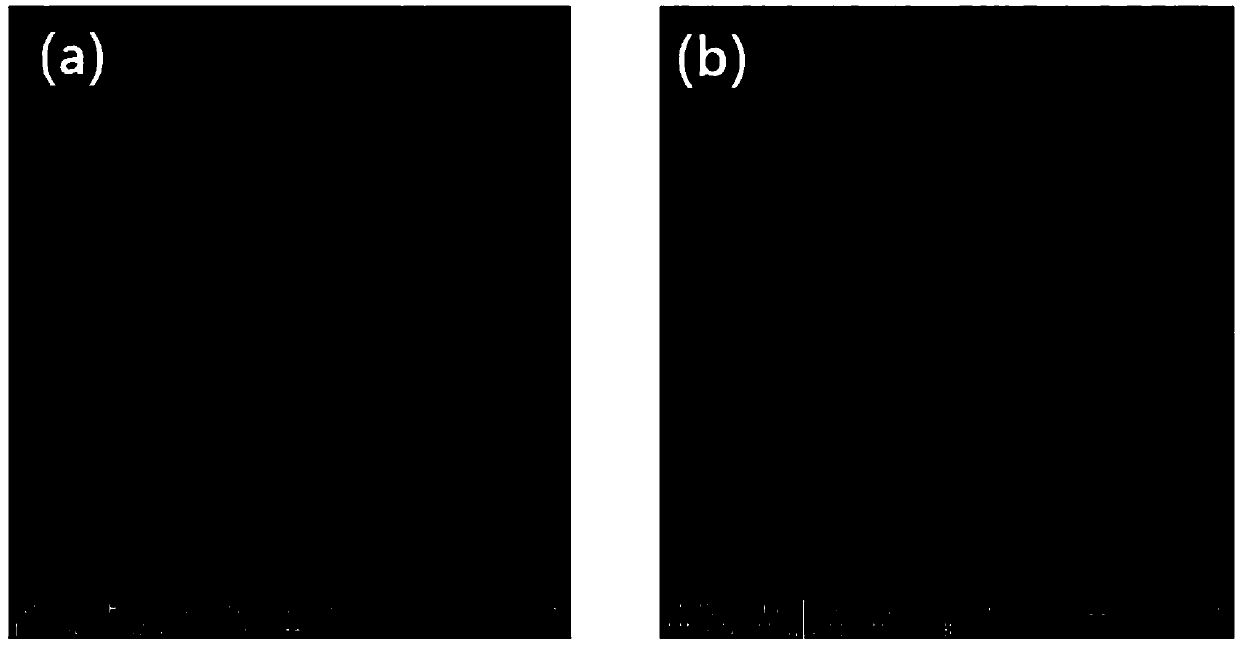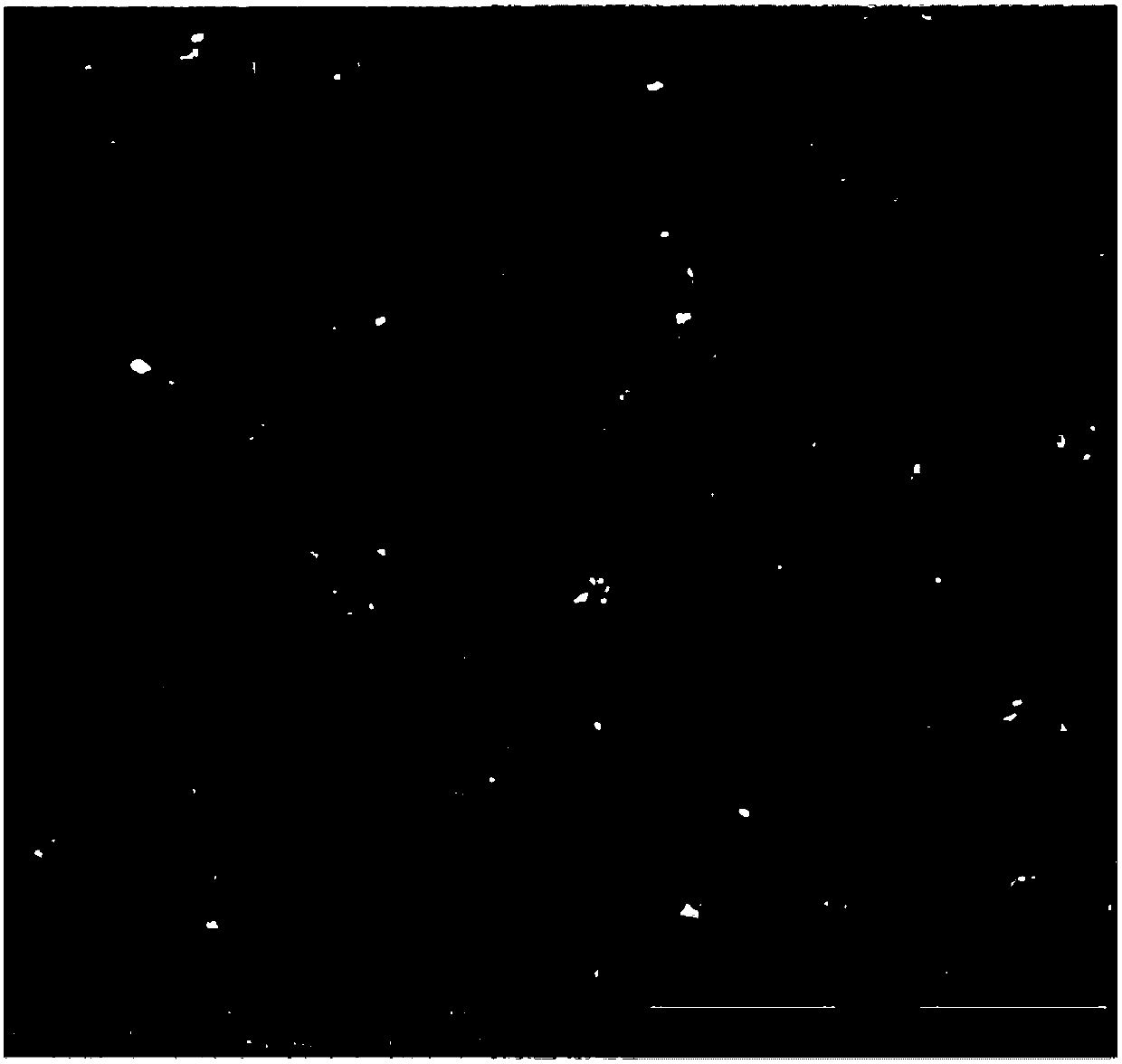Composite carbon-based counter electrode for dye-sensitized solar cell and preparation method thereof
A solar cell and dye sensitization technology, applied in the field of solar cells, can solve problems such as poor process controllability and repeatability, inability to realize industrial production, and great influence on carbon film performance, so as to improve carrier transmission efficiency and reduce Material cost and fabrication cost, effects of improved repeatability and consistency
- Summary
- Abstract
- Description
- Claims
- Application Information
AI Technical Summary
Problems solved by technology
Method used
Image
Examples
Embodiment 1
[0039] A method for preparing a composite carbon-based counter electrode for a dye-sensitized solar cell, specifically comprising the steps of:
[0040] (1) Use a 2B pencil lead to evenly scrape a square area of the FTO glass substrate after cleaning and drying to form a graphite carbon (PC) layer with a thickness of 10nm, and the size of the square area is 8mm × 8mm;
[0041] In this embodiment, scanning electron microscopy is used to characterize the morphology of the graphitic carbon layer, and the following results are obtained: figure 1 The results shown in (b), from figure 1 (b) It can be seen that the graphitic carbon layer on the FTO glass substrate is consistent with the surface morphology and flatness of the FTO substrate ( figure 1 (a) is very similar, which indicates that the surface of the graphitic carbon layer is uniform and flat, approximately a "planar" structure.
[0042] (2) Use tweezers to clamp the FTO glass substrate deposited with the PC layer and pl...
Embodiment 2
[0049] A method for preparing a composite carbon-based counter electrode for a dye-sensitized solar cell, specifically comprising the steps of:
[0050] (1) Use HB pencil lead to evenly scrape a square area of the FTO glass substrate after cleaning and drying to form a graphite carbon (PC) layer with a thickness of 200nm, and the size of the square area is 8mm * 8mm;
[0051] (2) Use tweezers to clamp the FTO glass substrate deposited with the PC layer and place it above the candle flame, so that the candle wick is 0.5 cm away from the FTO glass substrate, and move the FTO glass substrate left and right in front of this level for 10 seconds, and place it on the above square A carbon nanoparticle (CC) layer was obtained by regional deposition, and a CC / PC / FTO composite carbon-based counter electrode with an active area of 8mm×8mm was prepared so far.
[0052] Using the same assembly method and test method as in Example 1, the filling factor of the solar cell with the compos...
Embodiment 3
[0054] A method for preparing a composite carbon-based counter electrode for a dye-sensitized solar cell, specifically comprising the steps of:
[0055] (1) Use graphite blocks to evenly scrape a square area of the FTO glass substrate after cleaning and drying to form a graphite carbon (PC) layer with a thickness of 1000nm, and the size of the square area is 8mm * 8mm;
[0056] (2) Use tweezers to hold the FTO glass substrate deposited with the PC layer and place it above the candle flame, so that the candle wick is 5cm away from the FTO glass substrate, and move the FTO glass substrate left and right in front of this horizontal plane for 500s, and place it on the above square area A carbon nanoparticle (CC) layer was deposited to obtain a CC / PC / FTO composite carbon-based counter electrode with an active area of 8mm×8mm.
[0057] Using the same assembly method and test method as in Example 1, the filling factor of the solar cell with the composite carbon-based counter elec...
PUM
| Property | Measurement | Unit |
|---|---|---|
| thickness | aaaaa | aaaaa |
| thickness | aaaaa | aaaaa |
| thickness | aaaaa | aaaaa |
Abstract
Description
Claims
Application Information
 Login to View More
Login to View More - R&D
- Intellectual Property
- Life Sciences
- Materials
- Tech Scout
- Unparalleled Data Quality
- Higher Quality Content
- 60% Fewer Hallucinations
Browse by: Latest US Patents, China's latest patents, Technical Efficacy Thesaurus, Application Domain, Technology Topic, Popular Technical Reports.
© 2025 PatSnap. All rights reserved.Legal|Privacy policy|Modern Slavery Act Transparency Statement|Sitemap|About US| Contact US: help@patsnap.com



